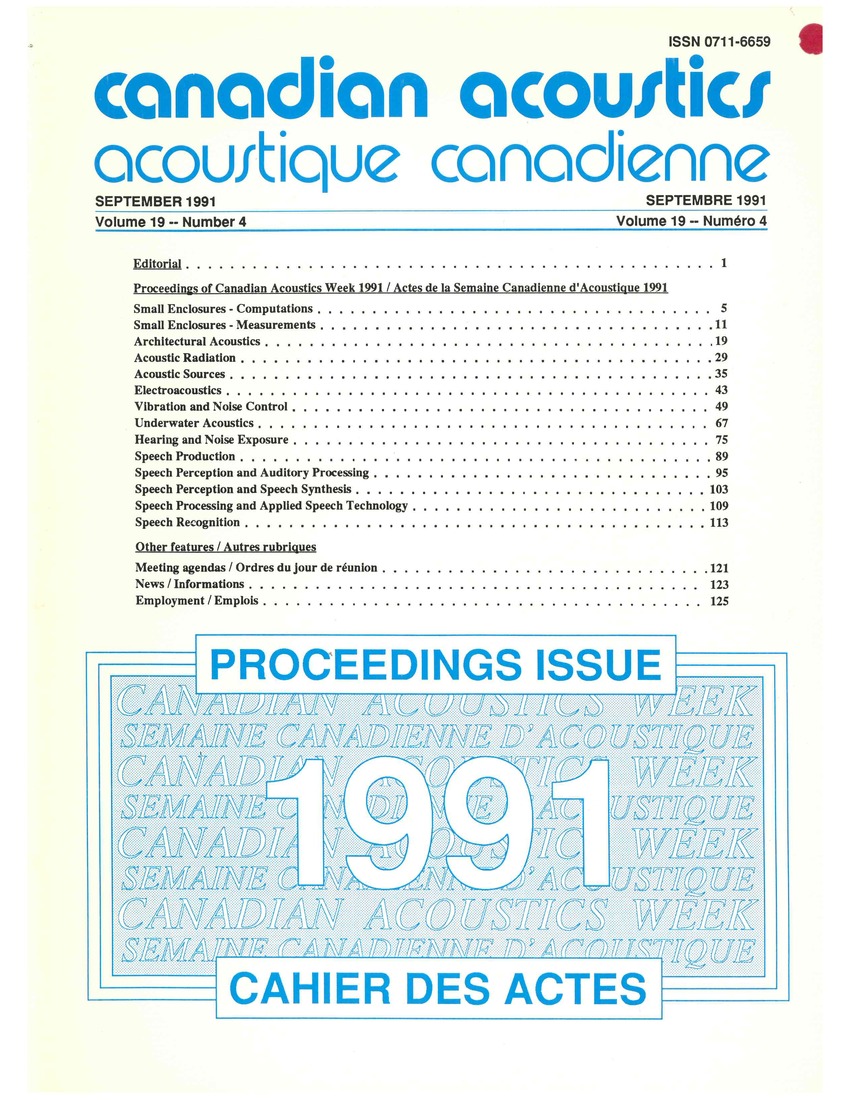Developmental aspects of second formant trajectories
Keywords:
speech analysis and processing, second formant trajectories, acoustic investigation, talker age, speech movements, vocal tract, consonant, vowel sounds, speech signal, speaking rates, young children, adults, syllable durations, articulatory movement, F2 transition rateAbstract
Presents the results of an acoustic investigation of the relationship between increasing talker age and the `speed' of speech movements, i.e., the speed at which the size and shape of the vocal tract changes to produce the sequences of consonant and vowel sounds in the speech signal. The speaking rates of young children are typically slower than those of adults. One factor contributing to the slower speaking rates of children is their greater syllable durations, compared to adults. The purpose of this investigation was to determine if the greater syllable durations of children are attributable to slower rates of articulatory movement as indexed by second formant (F2) transition rate. The specific hypotheses to be tested were that as talker age increased to young adulthood (a) an increase in F2 transition rate (corresponding to an expected increase in speed of articulator movement), and (b) a decrease in the intra-subject variability, in F2 transition rates, would be observedAdditional Files
Published
How to Cite
Issue
Section
License
Author Licensing Addendum
This Licensing Addendum ("Addendum") is entered into between the undersigned Author(s) and Canadian Acoustics journal published by the Canadian Acoustical Association (hereinafter referred to as the "Publisher"). The Author(s) and the Publisher agree as follows:
-
Retained Rights: The Author(s) retain(s) the following rights:
- The right to reproduce, distribute, and publicly display the Work on the Author's personal website or the website of the Author's institution.
- The right to use the Work in the Author's teaching activities and presentations.
- The right to include the Work in a compilation for the Author's personal use, not for sale.
-
Grant of License: The Author(s) grant(s) to the Publisher a worldwide exclusive license to publish, reproduce, distribute, and display the Work in Canadian Acoustics and any other formats and media deemed appropriate by the Publisher.
-
Attribution: The Publisher agrees to include proper attribution to the Author(s) in all publications and reproductions of the Work.
-
No Conflict: This Addendum is intended to be in harmony with, and not in conflict with, the terms and conditions of the original agreement entered into between the Author(s) and the Publisher.
-
Copyright Clause: Copyright on articles is held by the Author(s). The corresponding Author has the right to grant on behalf of all Authors and does grant on behalf of all Authors, a worldwide exclusive license to the Publisher and its licensees in perpetuity, in all forms, formats, and media (whether known now or created in the future), including but not limited to the rights to publish, reproduce, distribute, display, store, translate, create adaptations, reprints, include within collections, and create summaries, extracts, and/or abstracts of the Contribution.


